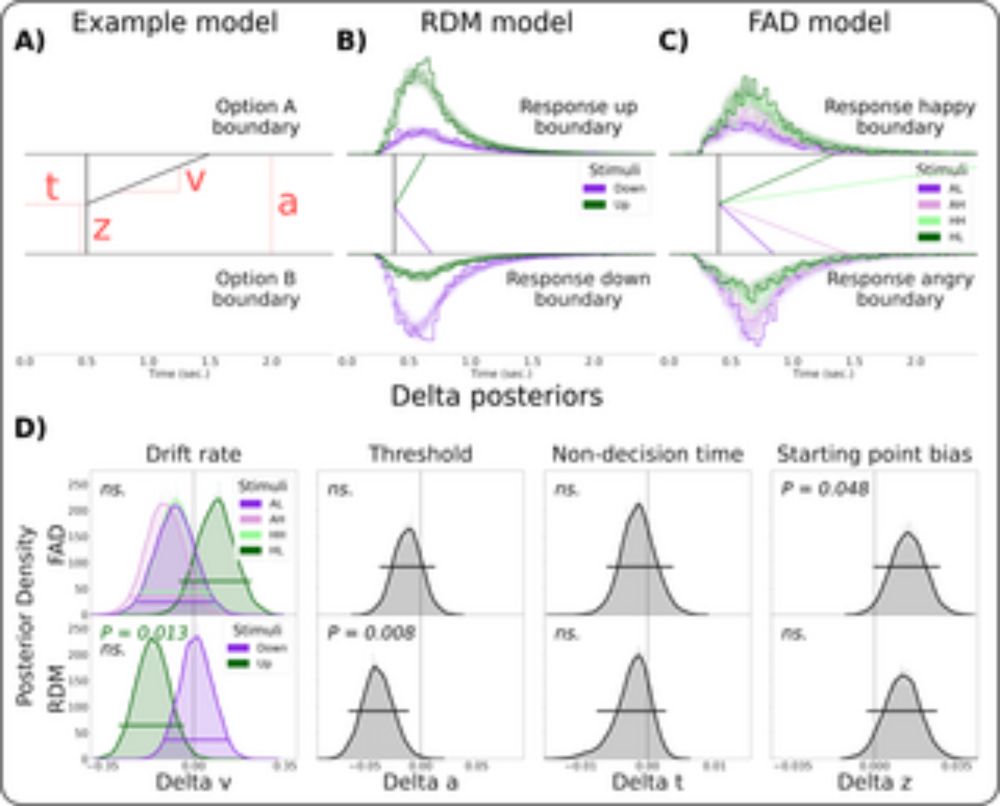
We love to trash dominant hypothesis, but we need to look for evidence against the manifold hypothesis elsewhere:
This elegant work doesn't show neural dynamics are high D, nor that we should stop using PCA
It’s quite the opposite!
(thread)

We love to trash dominant hypothesis, but we need to look for evidence against the manifold hypothesis elsewhere:
This elegant work doesn't show neural dynamics are high D, nor that we should stop using PCA
It’s quite the opposite!
(thread)
(with @judithschepers.bsky.social & @benediktehinger.bsky.social)
Do you have RTs in your 🧠📈-data? Fixation durations?
How do event-durations affect your data? And how to deal with this?
doi.org/10.1162/IMAG...
🧵 ⤵ 1 / 7
🧪 #EEG #fMRI #neuroimage

(with @judithschepers.bsky.social & @benediktehinger.bsky.social)
Do you have RTs in your 🧠📈-data? Fixation durations?
How do event-durations affect your data? And how to deal with this?
doi.org/10.1162/IMAG...
🧵 ⤵ 1 / 7
🧪 #EEG #fMRI #neuroimage
Learn more here 👇

Learn more here 👇


www.cpconf.org
@robbrutledge.bsky.social @drrickadams.bsky.social @tobiasuhauser.bsky.social @docqhuys.bsky.social @clairegillan.bsky.social Sonia Bishop
More info to come soon!

www.cpconf.org
@robbrutledge.bsky.social @drrickadams.bsky.social @tobiasuhauser.bsky.social @docqhuys.bsky.social @clairegillan.bsky.social Sonia Bishop
More info to come soon!
Why is cognitive effort experienced as costly?
(or why does it hurt to think)
never written a review paper before in my life, that was a new and unusual experience

Why is cognitive effort experienced as costly?
(or why does it hurt to think)
never written a review paper before in my life, that was a new and unusual experience
Very excited to be a part of the project led by
@saurabhbedi.bsky.social on how the brain learns from multimodal inputs (e.g. audiovisual):
Separable neurocomputational mechanisms underlying multisensory learning
biorxiv.org/content/10.1...

Very excited to be a part of the project led by
@saurabhbedi.bsky.social on how the brain learns from multimodal inputs (e.g. audiovisual):
Separable neurocomputational mechanisms underlying multisensory learning
biorxiv.org/content/10.1...

We study how getting more feedback (seeing what you could have earned) and facing gains vs losses change the way people choose between risky and safe options.
🖇️Link: doi.org/10.31234/osf...
It's a thread🧶:

We study how getting more feedback (seeing what you could have earned) and facing gains vs losses change the way people choose between risky and safe options.
🖇️Link: doi.org/10.31234/osf...
It's a thread🧶:

@investnscience.bsky.social — from the questions that drive your work to the breakthroughs that inspire you. We are a group of scientists highlighting how science benefits everyone.
DM me to sign up or with any questions!
Meet up with us to collaborate and share your science journey: from the questions that drive your work to the breakthroughs that inspire you.
Sign up here:
calendly.com/investnscien...
And share with your science friends!

@investnscience.bsky.social — from the questions that drive your work to the breakthroughs that inspire you. We are a group of scientists highlighting how science benefits everyone.
DM me to sign up or with any questions!
@plos.org Computational Biology! 🫁
"The respiratory cycle modulates distinct dynamics of affective and perceptual decision-making"
doi.org/10.1371/jour...
We show how respiratory 'tidal computations' alter our decisons!

@plos.org Computational Biology! 🫁
"The respiratory cycle modulates distinct dynamics of affective and perceptual decision-making"
doi.org/10.1371/jour...
We show how respiratory 'tidal computations' alter our decisons!
#blueprint 1/7

#blueprint 1/7
We tested whether brief striatal dopamine release events influence the vigor of skilled movements. Despite popular belief, we did not find any evidence linking rapid dopamine dynamics to motor vigor on a moment-by-moment basis.

We tested whether brief striatal dopamine release events influence the vigor of skilled movements. Despite popular belief, we did not find any evidence linking rapid dopamine dynamics to motor vigor on a moment-by-moment basis.
But... can they? We don’t actually know.
In our new study, we develop a Computational Turing Test.
And our findings are striking:
LLMs may be far less human-like than we think.🧵

But... can they? We don’t actually know.
In our new study, we develop a Computational Turing Test.
And our findings are striking:
LLMs may be far less human-like than we think.🧵
Does war trauma leave a lasting imprint on civilians’ brains🧠?
We analyzed ~40k MRIs in the #UKBiobank, including ~6k of people born during WWII. Those exposed to close bombings in-utero show differences in brain structure, even decades later.
www.biorxiv.org/content/10.1...



Does war trauma leave a lasting imprint on civilians’ brains🧠?
We analyzed ~40k MRIs in the #UKBiobank, including ~6k of people born during WWII. Those exposed to close bombings in-utero show differences in brain structure, even decades later.
www.biorxiv.org/content/10.1...
Looking for a PhD in neuroeconomics, social, or decision neuroscience? I'm looking to support an application for the MIBTP ESRC program starting Fall 2026. Details below, but please get in touch with me before applying!
Pls share!
www.findaphd.com/phds/project...

Looking for a PhD in neuroeconomics, social, or decision neuroscience? I'm looking to support an application for the MIBTP ESRC program starting Fall 2026. Details below, but please get in touch with me before applying!
Pls share!
www.findaphd.com/phds/project...
We report that neural correlates of evidence accumulation (CPP, Mu/Beta) are also observed during value-based decisions.
www.biorxiv.org/content/10.1...
Led by @laurencf.bsky.social (Lauren Fong)
1/n

We report that neural correlates of evidence accumulation (CPP, Mu/Beta) are also observed during value-based decisions.
www.biorxiv.org/content/10.1...
Led by @laurencf.bsky.social (Lauren Fong)
1/n
Wrong.
Interconnected brain modules exist at the level of fine grained transcriptomics. www.nature.com/articles/s41...

Wrong.
Interconnected brain modules exist at the level of fine grained transcriptomics. www.nature.com/articles/s41...

"Sleep Reactivity Amplifies the Impact of Pre-Sleep Cognitive Arousal on Sleep Disturbances"
Led by Noof Shaif /w Ju Lynn Ong, Julian Lim, Anthony Reffi, and Michael Chee
onlinelibrary.wiley.com/doi/full/10....

"Sleep Reactivity Amplifies the Impact of Pre-Sleep Cognitive Arousal on Sleep Disturbances"
Led by Noof Shaif /w Ju Lynn Ong, Julian Lim, Anthony Reffi, and Michael Chee
onlinelibrary.wiley.com/doi/full/10....

